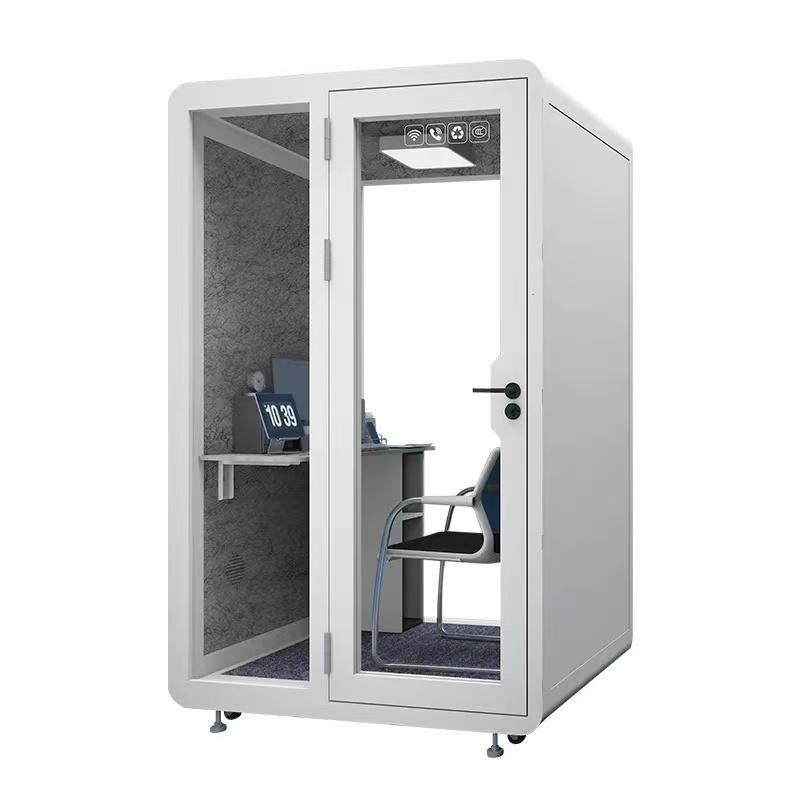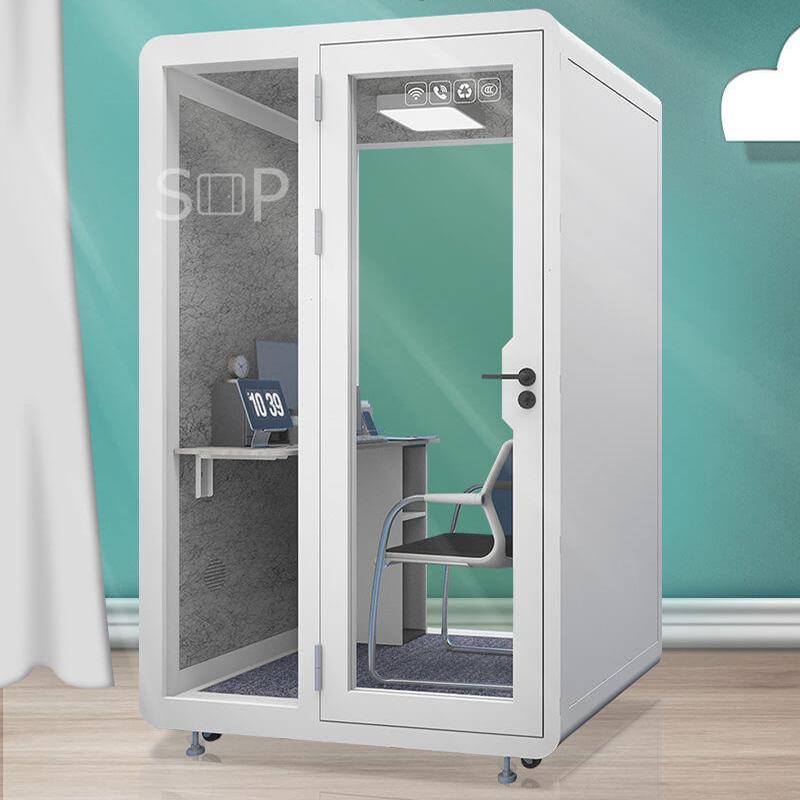Author:SOP Work Pods Manufacturer TIME:2025-06-04
In today’s office environments, sustainability is more than a buzzword—it’s a critical priority. Organizations are increasingly adopting eco-conscious practices to reduce their environmental footprint, from energy-efficient lighting to zero-waste initiatives. One innovation gaining popularity in modern offices is the use of office pods—compact, self-contained workspaces that provide privacy and focus within open-plan layouts. But with sustainability under the spotlight, it's important to ask: Are your office pods truly eco-friendly?
This article explores what makes office pods sustainable, from the materials used in their construction to their lifecycle environmental impact.

An eco-friendly product minimizes harm to the environment throughout its lifecycle—encompassing material sourcing, manufacturing, usage, and eventual disposal. For office pods, sustainability can be measured through several key criteria:
Material sustainability
Energy efficiency
Durability and longevity
Recyclability and end-of-life options
Let’s delve into each of these aspects to assess the true sustainability of your office pods.
One of the most defining features of an eco-friendly office pod is the materials used in its construction. Traditional office structures often rely on non-renewable resources and high-emission manufacturing processes. In contrast, sustainable pods are crafted from:
Recycled materials, which reduce dependence on virgin resources and lower carbon emissions.
Sustainable woods, such as bamboo or FSC-certified timber, which support responsible forestry practices.
Non-toxic finishes and adhesives, improving indoor air quality by limiting exposure to volatile organic compounds (VOCs).
By prioritizing these materials, manufacturers reduce environmental impact while creating a healthier workspace.
An often-overlooked aspect of eco-friendly office pods is energy efficiency. Quality pods are designed not only to be quiet and private but also to conserve energy. Features that support this include:
High-performance insulation that reduces reliance on HVAC systems.
LED lighting and low-power electrical systems to minimize electricity consumption.
Natural lighting through skylights or windows, reducing daytime lighting needs.
These features contribute to a lower carbon footprint during day-to-day operations.
A critical element of eco-friendliness is how long a product lasts. Durable pods reduce the frequency of replacements, saving resources and minimizing landfill waste. Look for:
High-quality construction that withstands frequent use.
Modular components that can be repaired or upgraded individually.
Materials resistant to wear and aging, maintaining structural integrity over time.
The longer your pods remain functional, the more sustainable your investment becomes.
Eco-consciousness doesn’t stop at product use. Truly sustainable pods consider what happens when the product reaches the end of its life. Eco-friendly designs allow for:
Easy disassembly and separation of recyclable components like metal frames and plastics.
Biodegradable or compostable elements in wood-based or fabric components.
Refurbishing and resale programs offered by manufacturers that support circular economy practices.
These initiatives ensure office pods don’t end up as landfill waste, but instead contribute to resource recovery and reuse.

The responsibility for sustainable products doesn’t rest solely with buyers—manufacturers play a pivotal role. Forward-thinking companies are embracing green manufacturing practices, including:
Using renewable energy sources in production facilities.
Reducing waste during manufacturing and packaging.
Certifications like ISO 14001 or GREENGUARD, which demonstrate adherence to strict environmental standards.
Businesses should look for partners who transparently commit to sustainability, both in product and process.
While eco-friendly office pods are a smart step forward, they’re part of a larger sustainability strategy. Strategically deployed pods can reduce the need for expansive real estate, optimize space usage, and improve employee well-being by offering comfortable, low-impact workspaces.
Moreover, fostering a culture that values sustainability—through materials, energy use, and workplace design—enhances corporate social responsibility (CSR) and strengthens your brand's environmental credibility.
So, are your office pods truly eco-friendly? The answer depends on a thorough evaluation of their materials, energy performance, durability, and recyclability. By understanding these dimensions and aligning them with your organization’s sustainability goals, you can make informed, responsible choices.
Eco-friendly office pods offer more than environmental benefits—they support employee wellness, reduce operational costs, and reflect a commitment to a better, greener future.
